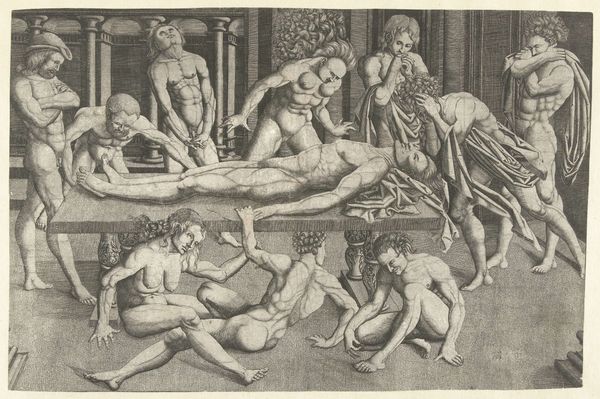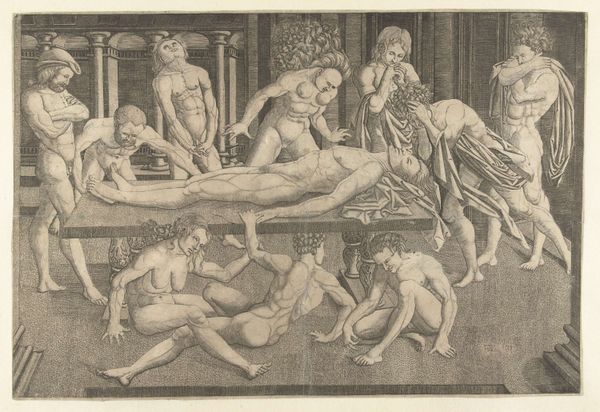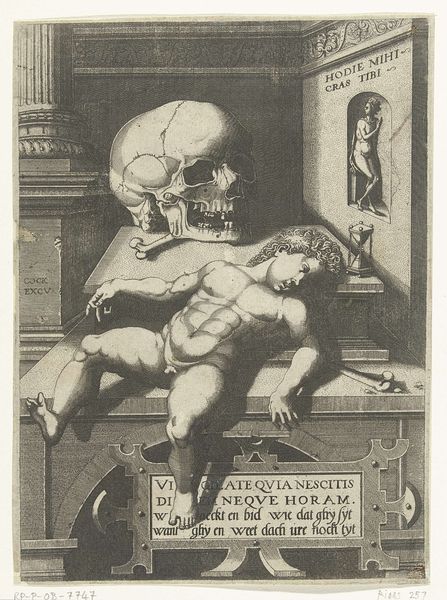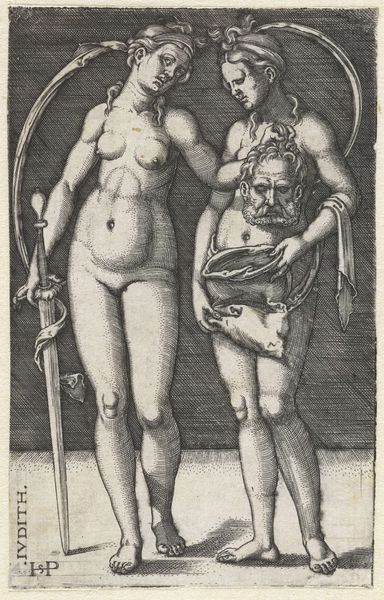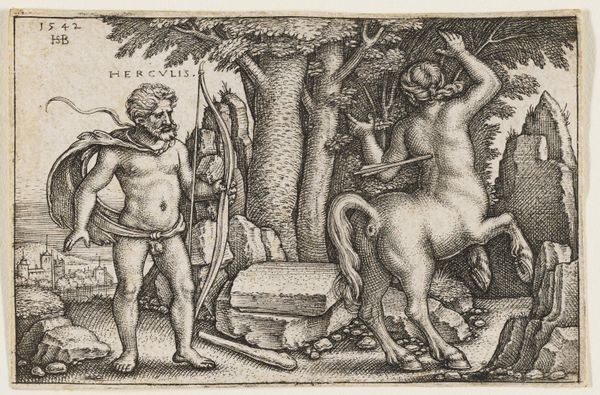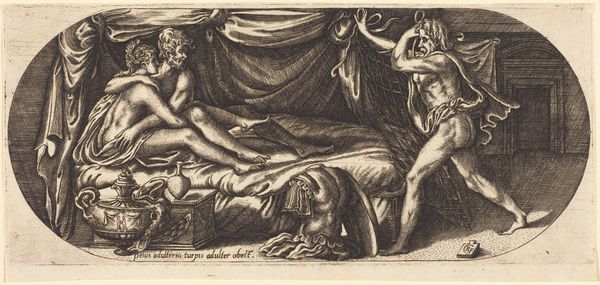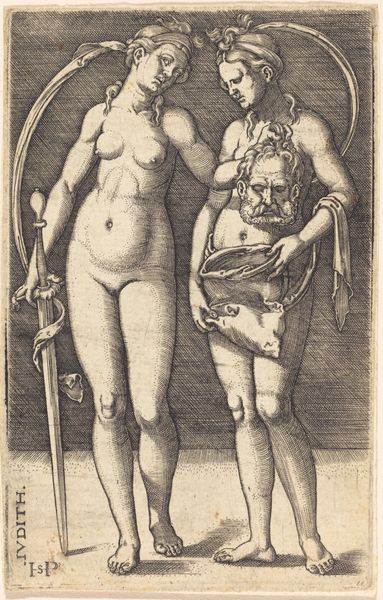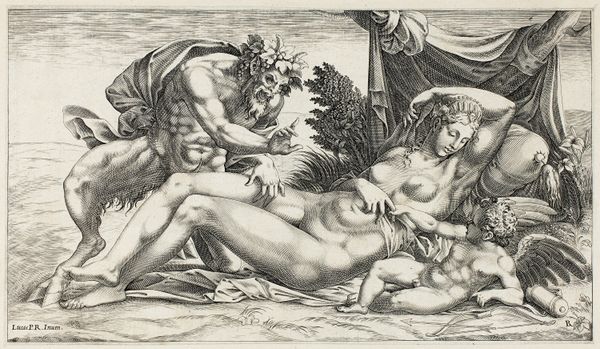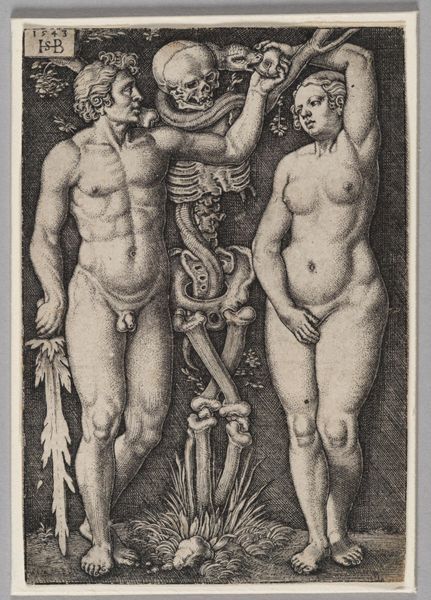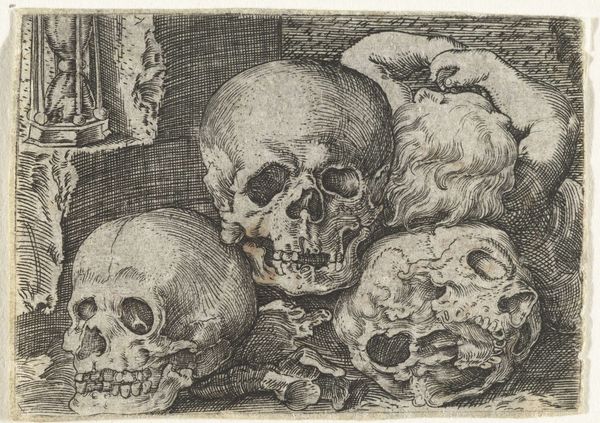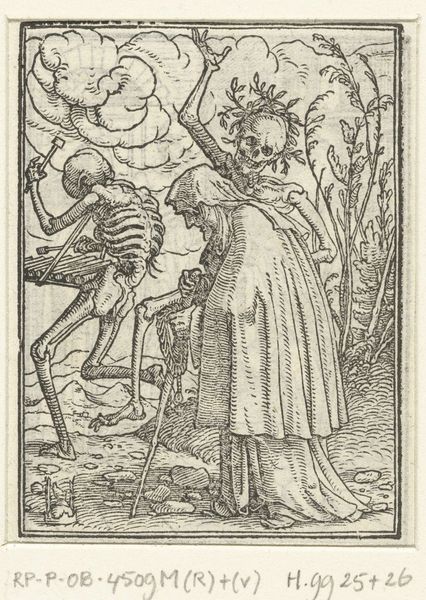
print, engraving
#
portrait
#
allegory
#
pen drawing
# print
#
old engraving style
#
mannerism
#
figuration
#
momento-mori
#
line
#
northern-renaissance
#
nude
#
engraving
Dimensions: height 57 mm, width 81 mm
Copyright: Rijks Museum: Open Domain
Sebald Beham created this tiny print, "Death and Sleeping Young Woman," in 1548, rendered entirely in ink on paper. The process of engraving—cutting lines into a metal plate, inking it, and pressing it onto paper—demands absolute control. Notice how Beham uses densely packed, parallel lines to build up the shadows, creating a sort of topographic effect. This technique allowed him to achieve remarkable detail, from the intricate folds of the bedsheets to the chilling skeletal form of Death himself. Prints like this were made to be circulated widely, reproduced in multiples, and sold at relatively low cost. The labor involved in their production was intensive and skilled, but the goal was always distribution. The message is stark: even in the most intimate and vulnerable moments, death is always present. The material conditions of printmaking mirror this theme, reminding us of the relentless and reproducible nature of mortality itself. Thinking about how this image was crafted, and its place in early modern society, gives us a richer appreciation of its emotional power.
Comments
No comments
Be the first to comment and join the conversation on the ultimate creative platform.

